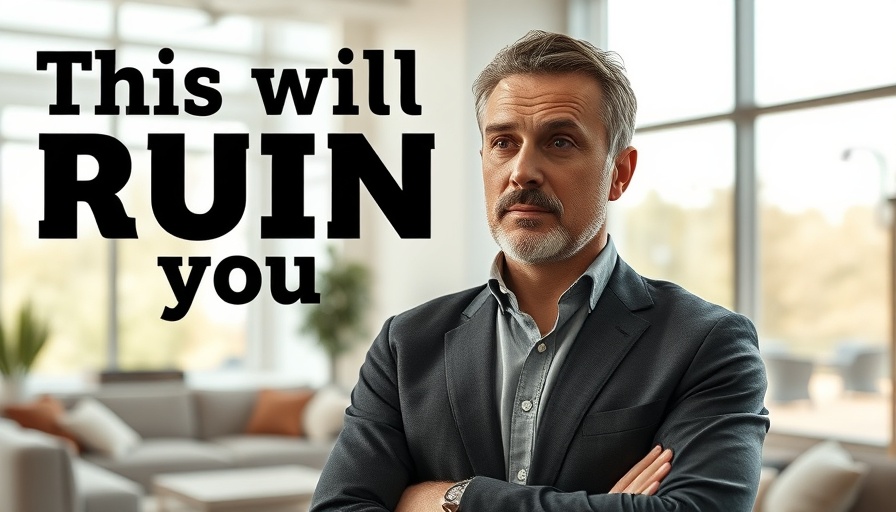
Understanding Distraction: A Modern Dilemma for Spa Leaders
In the serene world of wellness, distraction might seem like a distant problem — something that happens “out there” in the chaos of modern life.
But even in spas, where calm is the brand and mindfulness is the mission, the pull of distraction can quietly erode focus, creativity, and growth.
From endless notifications to the subtle temptation of checking Instagram “just for a minute,” spa owners and professionals face the same challenge as everyone else: keeping attention where it matters most. The difference? In your business, presence is your product.
This article explores how distraction drains potential, what experts say about managing focus, and how small shifts can help spa owners reclaim time, energy, and inspiration in an increasingly busy world.
In 'Distraction is Costing You Your Future,' the discussion dives into the impact of distractions on personal and professional growth, and we’re exploring key insights that can empower spa owners to enhance their time management strategies.
The True Cost of Distraction
Motivational coach Brendon Burchard highlights a startling fact:
“The average American spends about two hours a day on social media.”
That’s roughly 60 hours a month — the equivalent of a full work week lost to scrolling.
Imagine what a spa could achieve with one extra week of focused energy each month: a refreshed website, new marketing campaign, staff training, or even just the time to dream up your next seasonal service.
For spa professionals, that statistic isn’t just about lost hours — it’s about lost momentum. Distraction can dilute the deep, intentional mindset that fuels both client care and business growth.
Why Focus Is the New Form of Wellness
While spas teach relaxation, clarity, and mindfulness, focus itself is now becoming a wellness skill. As management expert Peter F. Drucker once wrote:
“Time is the scarcest resource, and unless it is managed, nothing else can be managed.”
His point is simple but profound — every system in your spa, from booking to marketing, depends on how well you manage your time and attention. Without focus, no strategy works for long.
Behavioral scientist Cassie Mogilner Holmes, known for her research on time and happiness, offers a complementary perspective:
“To feel happier, people should spend their days on a variety of activities but their hours on more similar activities.”
For spa owners, that translates beautifully: while your days may include staff meetings, marketing, and treatments, your hours should be dedicated to single themes.
When you batch similar tasks — like working on promotions in one block and staff training in another — you not only get more done but feel calmer doing it.
It’s the same concept behind creating flow in a massage session — the rhythm and continuity matter.

Prioritizing What Matters: Progress Over Perpetual Busyness
Burchard warns that many professionals don’t lack consistency — they’re simply consistent in the wrong things. The issue isn’t laziness; it’s misplaced attention.
As a spa owner, ask yourself: are you consistently checking your inbox, rearranging towels, or scrolling for “marketing inspiration,” instead of building your referral program, refining your service menu, or mentoring your team?
Time management author Laura Vanderkam, whose TED Talk has inspired millions, breaks it down this way:
“We don’t build the lives we want by saving time. We build the lives we want, and then time saves itself.”
Her insight reframes the entire conversation. You don’t manage time by squeezing more into your schedule — you manage it by aligning time with what truly matters.
For a spa owner, that might mean dedicating protected time for innovation, or blocking mornings for strategic work before the day’s appointments take over.
The difference between being busy and being effective comes down to whether your daily actions are tied to your long-term vision.
The “Distraction Bucket” vs. the “Progress Bucket”
Brendon Burchard’s analogy of two “buckets” is especially helpful here.
The Distraction Bucket is filled with reactive activities — constant email checking, unnecessary meetings, and time-draining multitasking.
The Progress Bucket holds proactive actions that move you forward — training your staff, engaging with clients meaningfully on social media, refining the spa menu, or implementing a loyalty program.
The goal is simple: empty your distraction bucket each week and fill your progress bucket intentionally.
When you make this shift, you begin to experience what productivity author Nir Eyal, author of Indistractable, calls “traction” — actions that pull you toward what you really want.
“The opposite of distraction isn’t focus,” Eyal explains. “It’s traction — actions that draw you toward your goals.”
This redefinition makes focus tangible. It’s not about ignoring the world; it’s about consistently choosing the activities that align with your purpose.

Creating a Focused Environment
Even the most disciplined spa professional can struggle to focus in the wrong environment. Your surroundings — digital and physical — either support your attention or scatter it.
Start by minimizing digital noise. Turn off unnecessary notifications on your business phone. Batch responses to emails or DMs instead of reacting instantly.
If possible, create a dedicated workspace for deep work, separate from where clients or staff constantly approach you.
On the physical side, your spa environment should reflect the calm you want to cultivate. Cluttered staff areas, chaotic schedules, or too many interruptions can silently train your mind to multitask.
Productivity consultant Julie Morgenstern, author of Time Management from the Inside Out, puts it best:
“Disorganization is often just delayed decisions.”
By simplifying systems — whether it’s scheduling, inventory, or communication — you create an environment where focus naturally thrives.
Reclaiming Lost Time: The Power of Small Changes
The good news? You don’t need a total life overhaul to reclaim your focus. Often, small, consistent tweaks deliver the biggest results.
Here are a few spa-specific examples:
Delegate intentionally. If you have a front desk team, empower them to handle rebooking and follow-up calls so you can focus on leadership or training.
Use time-tracking apps like Toggl or Clockify to see where your hours actually go. Sometimes awareness alone sparks change.
Automate what you can. Scheduling software like Mangomint, Boulevard, or Vagaro can handle reminders, confirmations, and even upsell suggestions automatically.
Think of it like skin health — consistent daily care, not once-a-year detoxing, keeps results visible.

Building a Culture of Progress Within Your Team
Your team reflects your own focus habits. If you’re constantly rushing, distracted, or unavailable, that energy becomes contagious. But so does calm, purposeful leadership.
Hold short, focused meetings that drive action rather than discussion for its own sake. Share the “progress bucket” philosophy with your staff so they can prioritize what matters too — from client care to professional growth.
Leadership coach Michael Hyatt, author of Free to Focus, notes:
“You’ll never drift into excellence. You must chart a course.”
Creating a shared culture of intentional progress helps everyone row in the same direction. Over time, it not only improves productivity but also deepens morale and trust — qualities every great spa thrives on.
Future Trends: Where Focus Meets Spa Innovation
As technology reshapes wellness, focus will become an even greater advantage. Artificial intelligence, virtual consultations, and digital marketing tools can make spa management easier — but they can also multiply distractions if not used wisely.
Forward-thinking spa owners will treat focus as a competitive edge.
They’ll integrate new tools selectively, staying grounded in personal connection, hands-on expertise, and authentic client relationships — the timeless qualities no algorithm can replace.
“Innovation doesn’t mean doing everything new,” as Vanderkam reminds us. “It means doing the right new things at the right time.”
The Takeaway: Make Focus a Daily Practice
Recognizing and breaking patterns of distraction isn’t about perfection — it’s about awareness. Every day, you have the chance to choose presence over reaction, intention over impulse.
Burchard’s insight still rings true: success doesn’t come from doing more; it comes from doing what matters without interruption.
If you’re ready to reclaim your time and elevate your spa’s growth, consider using platforms like Growth Day or Focus@Will, or even a simple notebook system to track meaningful progress. What matters is starting now — because the future of your business depends on the focus you bring today.
Learn more about team culture, management strategies, and business growth in the Leadership & Growth category, or head back to Spa Front News for broader coverage on spa trends, innovation, and industry intelligence.
—
Authored by the Spa Front News Editorial Team — a publication of DSA Digital Media, dedicated to elevating the spa industry with expert insights, treatment breakthroughs, and destination features for spa owners, managers, and wellness leaders.
 Add Row
Add Row  Add
Add 




Write A Comment